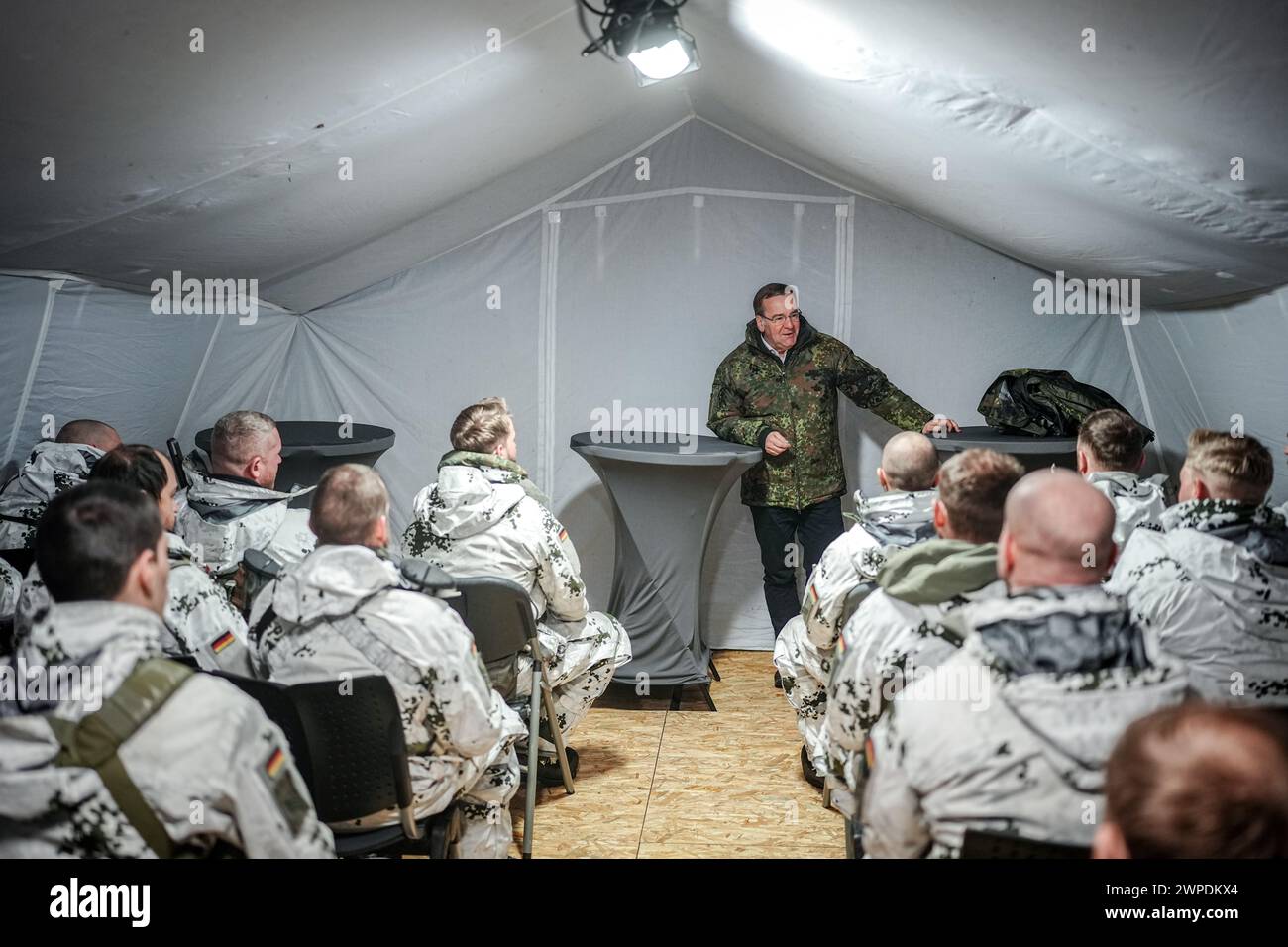Sweden's Tanks, Finland's Troops: A Pan-Nordic Defense Force?

Table of Contents
Sweden's Military Contributions
Sweden's military boasts considerable strengths, making it a vital potential component of a Pan-Nordic Defense Force. Its contributions would significantly enhance the overall capabilities of any unified defense strategy.
Swedish Tank Capabilities
The backbone of the Swedish army is its formidable tank fleet. The Stridsvagn 122 (Strv 122), a modernized version of the Leopard 2, forms a significant part of this capability. These advanced main battle tanks offer superior firepower, mobility, and protection.
- Number of tanks: While precise numbers are not publicly released for security reasons, Sweden possesses a substantial number of modern main battle tanks.
- Firepower: The Strv 122 boasts a powerful 120mm smoothbore gun capable of engaging targets at long ranges.
- Mobility: The tanks are highly mobile, capable of operating effectively across diverse terrain.
- Modernization programs: Sweden continually upgrades its tank fleet, ensuring its forces remain technologically advanced.
- Integration with other Nordic forces: The potential for seamless integration with other Nordic armies through standardized training and communication protocols is a key consideration for future cooperation.
Air and Naval Power
Beyond its tanks, Sweden possesses a capable air force and navy. These branches play crucial roles in any comprehensive defense strategy.
- Fighter jets: Sweden operates modern fighter jets capable of air superiority and ground attack missions, providing crucial air cover for ground forces.
- Naval vessels: Its navy includes a mix of frigates, corvettes, and submarines, offering capabilities for coastal defense and maritime surveillance, critical for safeguarding the Baltic Sea.
- Anti-air defense systems: Advanced anti-air defense systems protect against aerial threats, creating a layered defense network.
- Coastal defense: Sweden possesses robust coastal defense systems to deter potential threats.
- Potential for joint operations: The integration of Swedish air and naval forces with their Nordic counterparts would create a powerful, multi-dimensional defense system.
Cybersecurity and Intelligence
In the modern battlefield, cybersecurity and intelligence are paramount. Sweden's advanced capabilities in these areas are invaluable assets.
- Cyber warfare defense: Sweden has invested heavily in defending its critical infrastructure and national systems from cyberattacks.
- Intelligence gathering: Its intelligence agencies possess significant capabilities in gathering and analyzing information vital for strategic decision-making.
- Information sharing within a Nordic framework: The sharing of intelligence within a Pan-Nordic framework would enhance the overall security of all participating nations.
Finland's Military Strengths
Finland's military, renowned for its highly trained personnel and effective defense strategies, provides a complementary set of capabilities to a potential Pan-Nordic Defense Force.
Highly Trained Ground Troops
The Finnish army is known for its exceptionally well-trained soldiers, possessing extensive experience in diverse warfare scenarios.
- Size of the army: Finland maintains a sizable, well-equipped army, ready for rapid deployment.
- Training intensity: Finnish soldiers undergo rigorous training, making them highly adaptable and effective in challenging conditions.
- Experience in asymmetric warfare: Finland's history and geography have provided valuable experience in handling asymmetric warfare threats.
- Potential for rapid deployment: Finland's forces are capable of rapid deployment and mobilization.
- Conscription system: Finland's conscription system provides a readily available reserve force.
Finnish Artillery and Missile Systems
Finland’s artillery and missile systems would strengthen a unified defense.
- Range and accuracy: Finnish artillery and missile systems are known for their accuracy and range, providing effective fire support.
- Types of artillery and missile systems: Finland possesses a diverse arsenal of artillery and missile systems suited for various scenarios.
- Anti-aircraft capabilities: Advanced anti-aircraft capabilities protect against air attacks.
- Integration with other Nordic systems: Compatibility with other Nordic systems would be crucial for seamless integration.
Finland's Strategic Location
Finland's geographical position is strategically significant.
- Border with Russia: Its border with Russia makes it a key player in regional security.
- Geographic location: Finland's location offers excellent surveillance capabilities in the Baltic Sea region.
- Potential for monitoring activity in the Baltic Sea: Its position enables the monitoring of activity in the Baltic Sea, crucial for regional stability.
Challenges and Opportunities for a Pan-Nordic Defense Force
While the potential benefits of a Pan-Nordic Defense Force are significant, several challenges need addressing.
Political and Strategic Alignment
Creating a unified defense requires overcoming political and strategic hurdles.
- NATO membership: Differences in NATO membership status among Nordic countries present a key challenge.
- National sovereignty concerns: Balancing national sovereignty with collaborative defense efforts requires careful negotiation.
- Resource allocation: Agreements on resource allocation among participating nations are essential.
- Command and control structures: Establishing efficient command and control structures would be a critical step.
Interoperability and Standardization
Interoperability is essential for a cohesive defense force.
- Communication systems: Standardizing communication systems is vital for effective coordination.
- Weapons systems compatibility: Ensuring compatibility of weapons systems and equipment is crucial.
- Training programs: Harmonizing training programs would enhance collaboration.
- Logistics and supply chains: Integrating logistics and supply chains would streamline operations.
Economic Considerations
The economic implications of a unified defense force demand careful consideration.
- Cost-benefit analysis: A comprehensive cost-benefit analysis is needed to determine the economic viability.
- Potential economic benefits of cooperation: Shared resources and reduced duplication can offer cost savings.
- Burden-sharing among nations: Establishing a fair system of burden-sharing is crucial for long-term sustainability.
Conclusion
Sweden's advanced tank capabilities and Finland's highly trained troops offer a strong foundation for a potential Pan-Nordic Defense Force. However, challenges exist concerning political alignment, interoperability, and economic considerations. The potential benefits – enhanced regional security and stability – are substantial, demanding further discussion and analysis. The future of Nordic defense hinges on addressing these challenges and exploring the possibilities for enhanced Nordic defense cooperation. Let's continue the conversation about strengthening Nordic security and exploring the full potential of a Pan-Nordic Defense Force.

Featured Posts
-
 Office365 Hacker Made Millions Targeting Executives
Apr 22, 2025
Office365 Hacker Made Millions Targeting Executives
Apr 22, 2025 -
 Analyzing Pope Franciss Impact The Upcoming Conclave
Apr 22, 2025
Analyzing Pope Franciss Impact The Upcoming Conclave
Apr 22, 2025 -
 Open Ai Simplifies Voice Assistant Development 2024 Developer Event Highlights
Apr 22, 2025
Open Ai Simplifies Voice Assistant Development 2024 Developer Event Highlights
Apr 22, 2025 -
 Papal Conclaves Explained The Process Of Selecting A New Pope
Apr 22, 2025
Papal Conclaves Explained The Process Of Selecting A New Pope
Apr 22, 2025 -
 Tik Tok And Trump Tariffs How Businesses Are Circumventing Them
Apr 22, 2025
Tik Tok And Trump Tariffs How Businesses Are Circumventing Them
Apr 22, 2025
